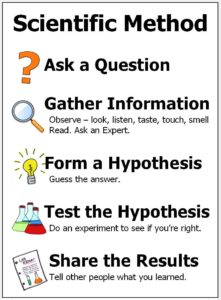Parents will love this science experiment because it only needs 2 ingredients, it’s so easy it’s fail-proof, it’s mess-proof and it can be done in a few minutes – what’s not to love? Your child will love it because it’s fun and unexpected – plus you might even let them eat the raisins when they finish.
We do it at CEFA schools, and I have yet to meet a child who didn’t enjoy it. And the raisins can definitely dance – they keep going even after 20 minutes!
Best Ages for This Activity
Two to five, but younger children also love it (who doesn’t love dancing raisins?).
How to Make It
Ingredients
- Any clear soda (enough to fill the glass) – open a new can or bottle as it won’t work if it’s flat.
- A small box of raisins – you only need 10 small ones, separated (if they are stuck together, they will be too heavy)
![]()
Let’s Get Started!
- Invite your child to try a science experiment first by pouring a glass of soda and putting on some music (Ok, you don’t have to put on music but it’s more fun, so why not?)
- Give your child a box of raisins and ask them what they think will happen if they put the raisins in the glass full of soda (try not to put more than five to ten raisins so they can really see what is happening).
- Wait for the answer – this is the best part! Will the raisins:
- Sink to the bottom and stay there?
- Float to the surface?
- Turn back into grapes?
- Explode?
- Shrink?
- Disappear?
- Change colour?
- Start dancing?
- Time to put the raisins in and observe
- Yes! The raisins start dancing!
- Was that one of your hypotheses? If so, congratulations!
- Can your child find the conclusion to this experiment? Why did that happen?
- Did the raisins hear the music and feel the urge to dance?
- Did adding the raisins to the soda cause it to start boiling?
- Were those magic raisins instead of regular raisins?
At first, the raisins drop to the bottom of the glass because they are more dense than the soda, but then, the bubbles of carbon dioxide (gas) from the soda attach to the raisins’ rough surface and lift them up. This is due to an increase in buoyancy (an upward force exerted by a fluid that opposes the weight of a partially or fully immersed object).
Once the bubbles reach the surface, they pop, releasing the gas into the air. Now that they are not as buoyant, they fall back down, but once new bubbles attach to them, they float back up to the surface until those bubbles burst, and on and on it goes until all of the carbon dioxide has escaped, leaving the soda flat, and the raisins left to their own devices.
Just to be sure that the raisins didn’t start dancing because of the music, you might want to try the experiment again, this time with the music off.
Learning Opportunities
Children will learn S.T.E.M. while trying this science experiment. They will have the opportunity to apply the scientific method, see below.

Extended Learning Opportunities
If you tried making my magical glow in the dark goop before, you will have a black light. Repeat the experiment, this time using tonic water instead of sprite, and doing I under the black light… watch your drink glow in the dark as the raisins begin their dance number!
CEFA tip: Remember to let your child do as much of the process as they are capable of.
Things to Keep in Mind
- Separate the raisins
- Use a fresh can or bottle of soda as it has to have a lot of gas
Books Your Child Might Like